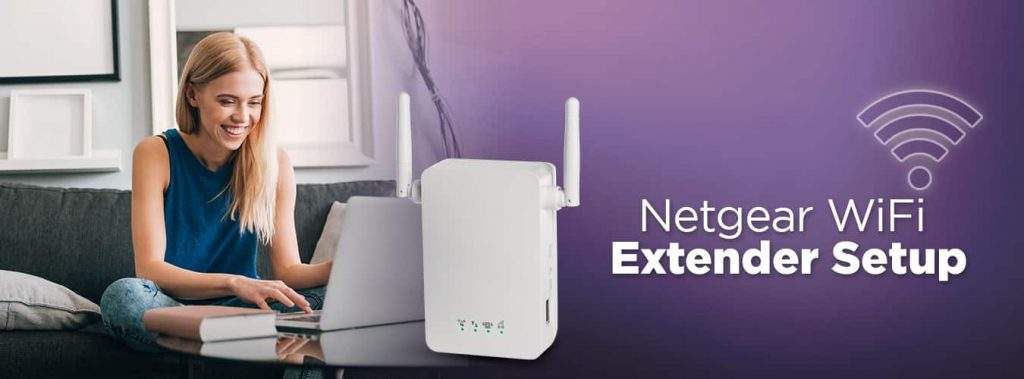
How To Install Netgear Wifi Extender Setup On An Existing Network?

This guide can help you to install the Netgear wifi Extender Setup over an already existing network. But before you proceed, note that data traffic routed through the extender is always slower than the traffic route directly from the ISP router. So, it is recommended to connect through an extender network when your wifi device is in a dead zone. Also, you can use the extender network if your existing network is poor.
Installation of the setup-
Follow the given process for the complete installation of the router setup-
1. Place your Netgear wifi Extender Setup in the router range and plug it in a wall jack-
- To begin with, the router installation, place your extender in the same room as the wifi router.
- Next, plug your extender into a wall jack to prevent it from any sudden shutdown during the installation.
- Finally, wait for the power LED to turn green. A green light indicates that the router is receiving power properly.
You have to place your extender in the router network range because static wifi signals are essential for the initial setup. If your extender lost signals during the installation, you have to start the whole process over again.
2. Connect your extender on an existing router network-
You can connect the extender to a network in two ways. You can either use the WPS button or an internet browser. However, the WPS method is much secure than the other one. By setting up your router with the WPS methods, you can skip the router registration process. You can directly move the device to your desired location without any hassle. But if any of your devices don’t support the WPS, choose the internet browser method.
WPS Button method-
- Press the WPS button on your router. You can find the button on the side panel of your extender.
- Then, wait for the WPS LED of the extender to blink solid green.
- Next, press the WPS button on the ISP router or the internet access point.
- Wait for the WPS LED on the router to become solid green.
- After that, find the extender network on your device. You can identify the router network by _EXT extension.
- Finally, connect your computer or any wifi device to the extender network. Use the same password that you use to connect to your router network.
Now, you have connected the extender to your existing router network. You can follow the steps given in the third section.
Internet browser methods-
- Firstly, connect any device to the extender network. You can easily identify the extender network with the help of _EXT extension.
- Next, wait for the Device Link LED on the router to turn green. A green light indicates a good connection between the extender and the wifi device.
- Launch an internet web browser on your device.
- Then, type the mywifiext.net in the browser’s search bar to go to the admin login portal.
- The New Extender setup window opens. First, create your account if you’re a new user. Then, enter the details in the respective input fields to create your account.
- After that, click on the NEXT button.
- A new window will open. You’d be able to see all the available networks in the window.
- Select the router network to extend and click on the NEXT button.
- Enter your router network password and again hit the NEXT button.
- Following this, create an SSID and password for the Netgear Extender network.
- Click on the NEXT button.
- Connect your computer, mobile, or any other wifi device to the router network.
- Wait till the confirmation page appears. Hit the NEXT button.
- The registration page will appear. You can register your extender device if you want. Otherwise, you can skip this step.
- Lastly, click on the Finish button to finalize the setup.
3. Move your extender device to the desired place-
- Unplug your router and move to the place where you usually face wifi issues such as slow internet, loss of network signal. But make sure that your extender must stay in the router network range.
- Then, plug your extender again at your selected place.
- Next, wait for the Power and Router Link LED to turn green. If any of these lights don’t turn green, try bringing the respective device closer to each other until the light blink green.
- After that, reconnect your computer or laptop device to the extender network again to finalize the setup. Check for the Device Link LED also to turn green.
Connecting the router using the ethernet cable
You can use a working ethernet cable to connect the router and extender. By connecting your devices with an ethernet cable technology, your device can have a static connection. Also, an Ethernet network is more secure rather than connecting with wifi. In addition, you can connect your device such as computer and laptop to the extender with the help of an ethernet cable. Follow these key steps to connect your device to the extender with the cable-
- Locate the Ethernet port on the extender and connect one end of the ethernet cable in that port.
- Then, pick the second end of the ethernet cable and connect it to your device’s or router’s ethernet port.
The drawback of the ethernet method is that you should have a long ethernet wire. Also, you may have to remove the ethernet cable every time you move the extender into a new place.